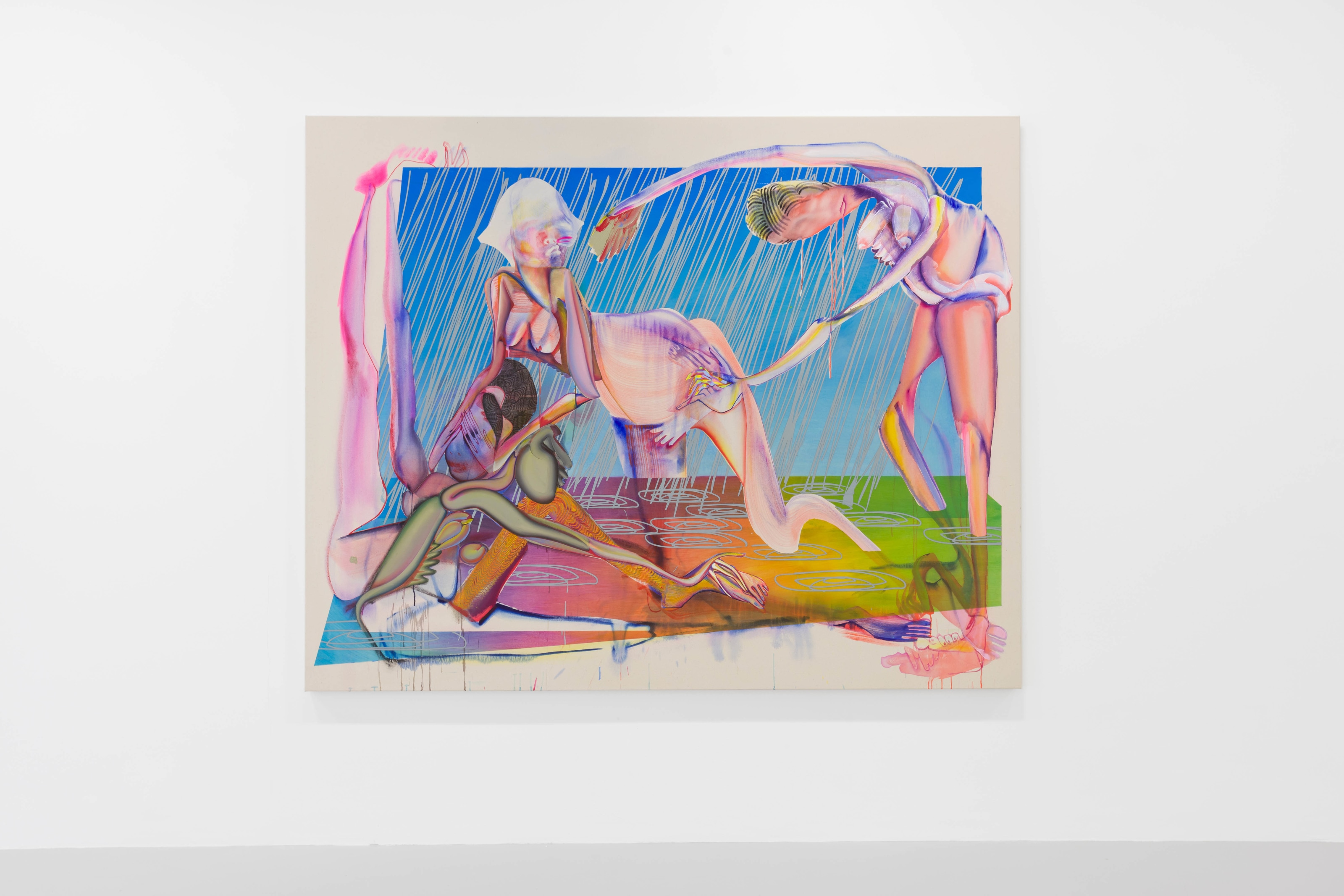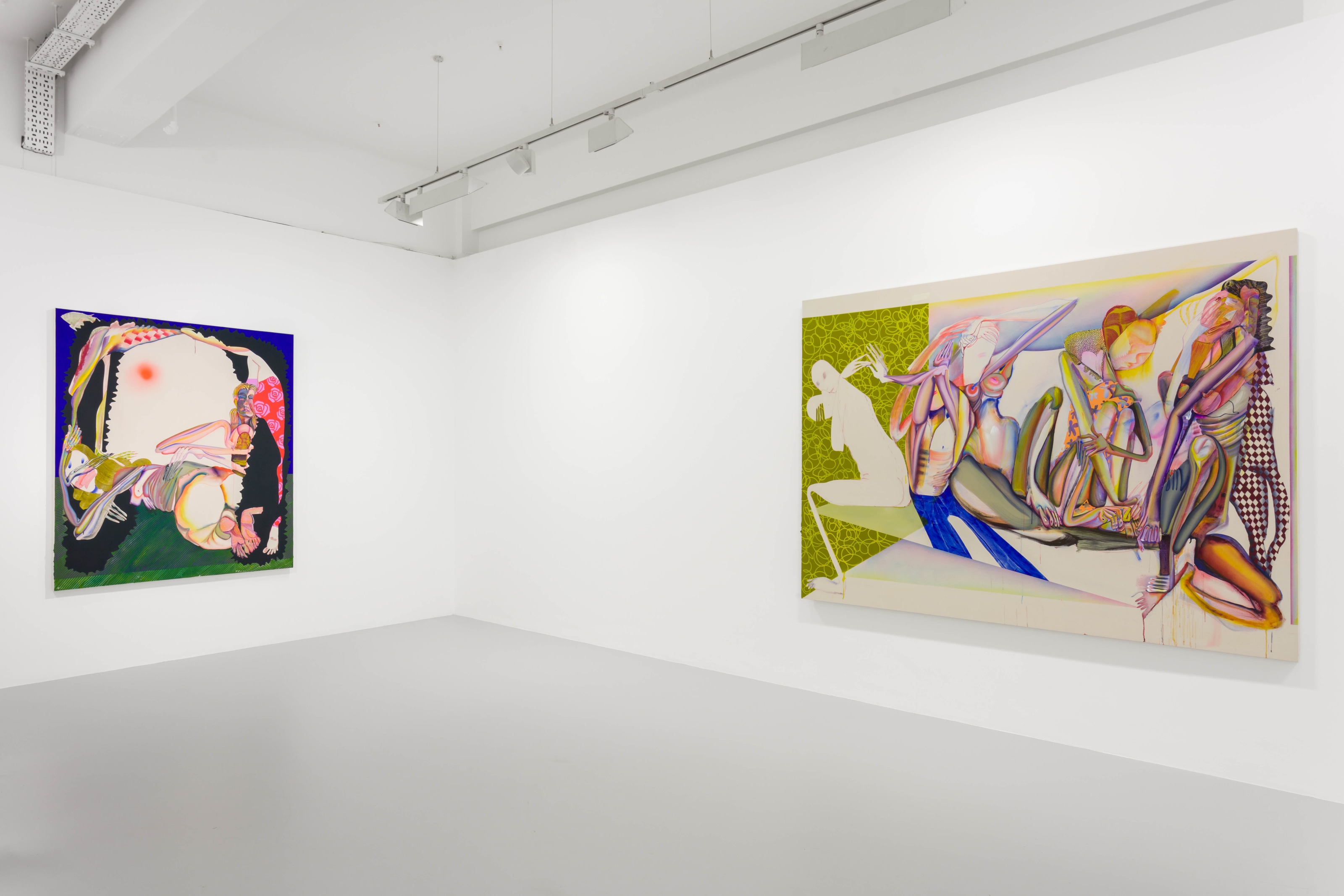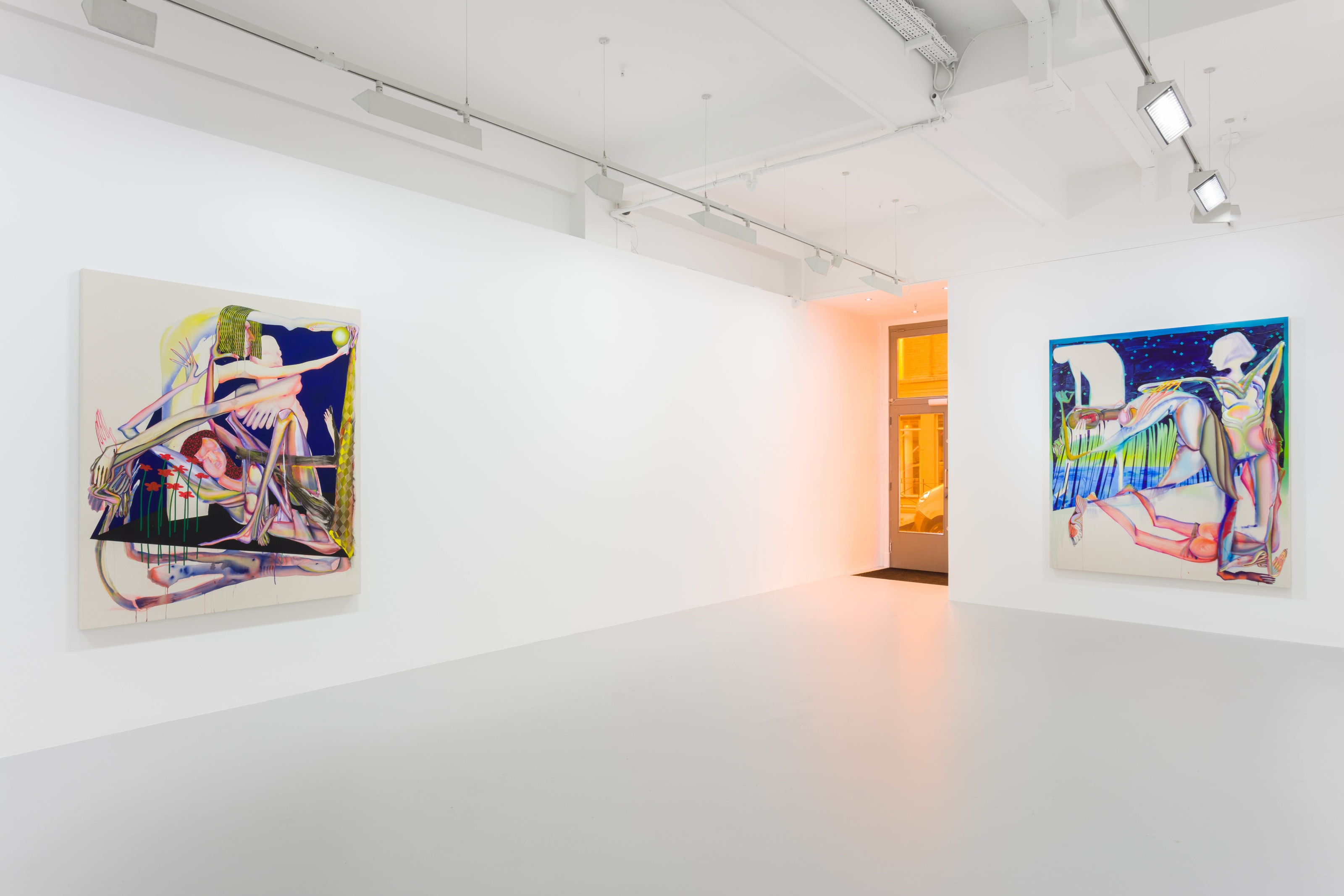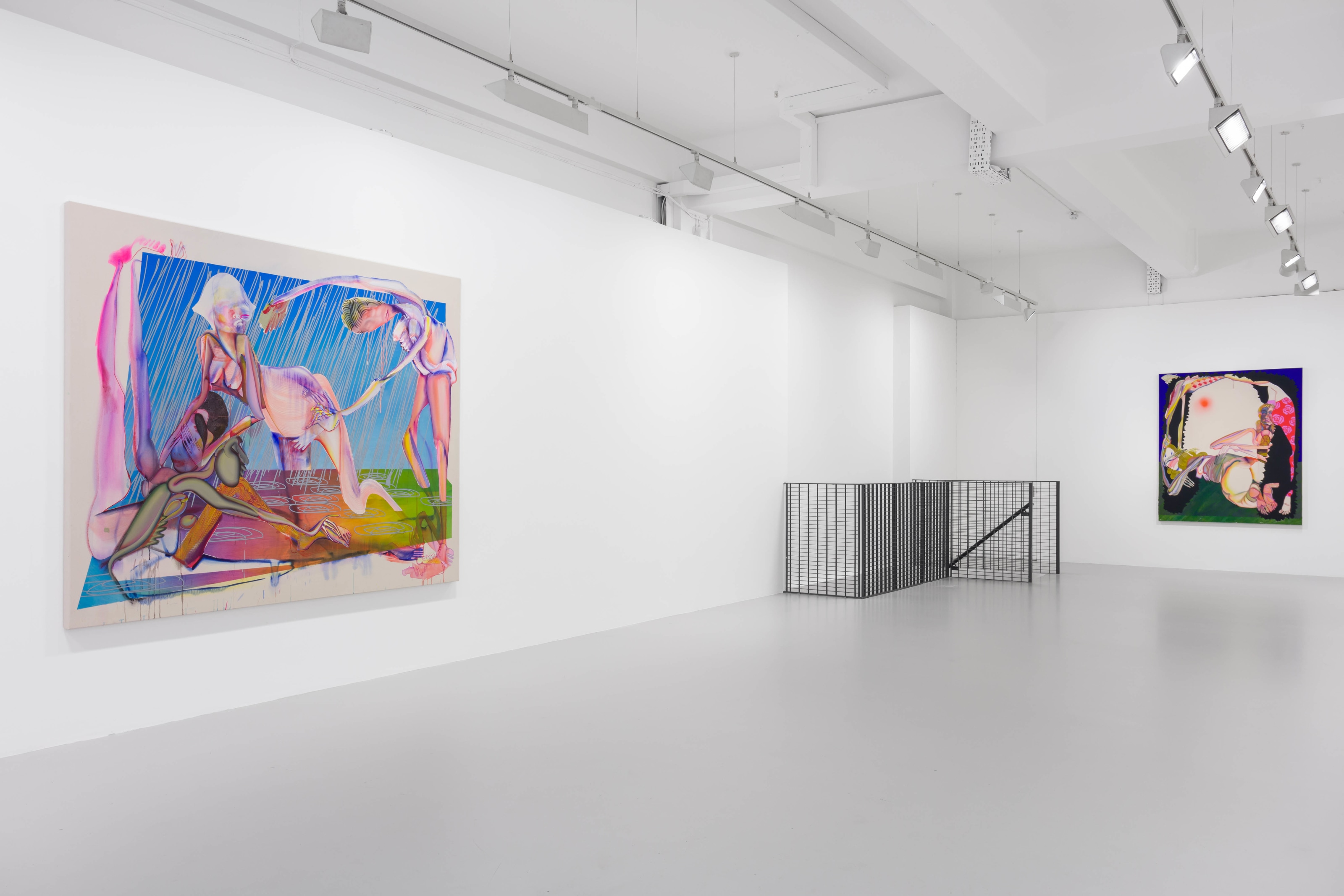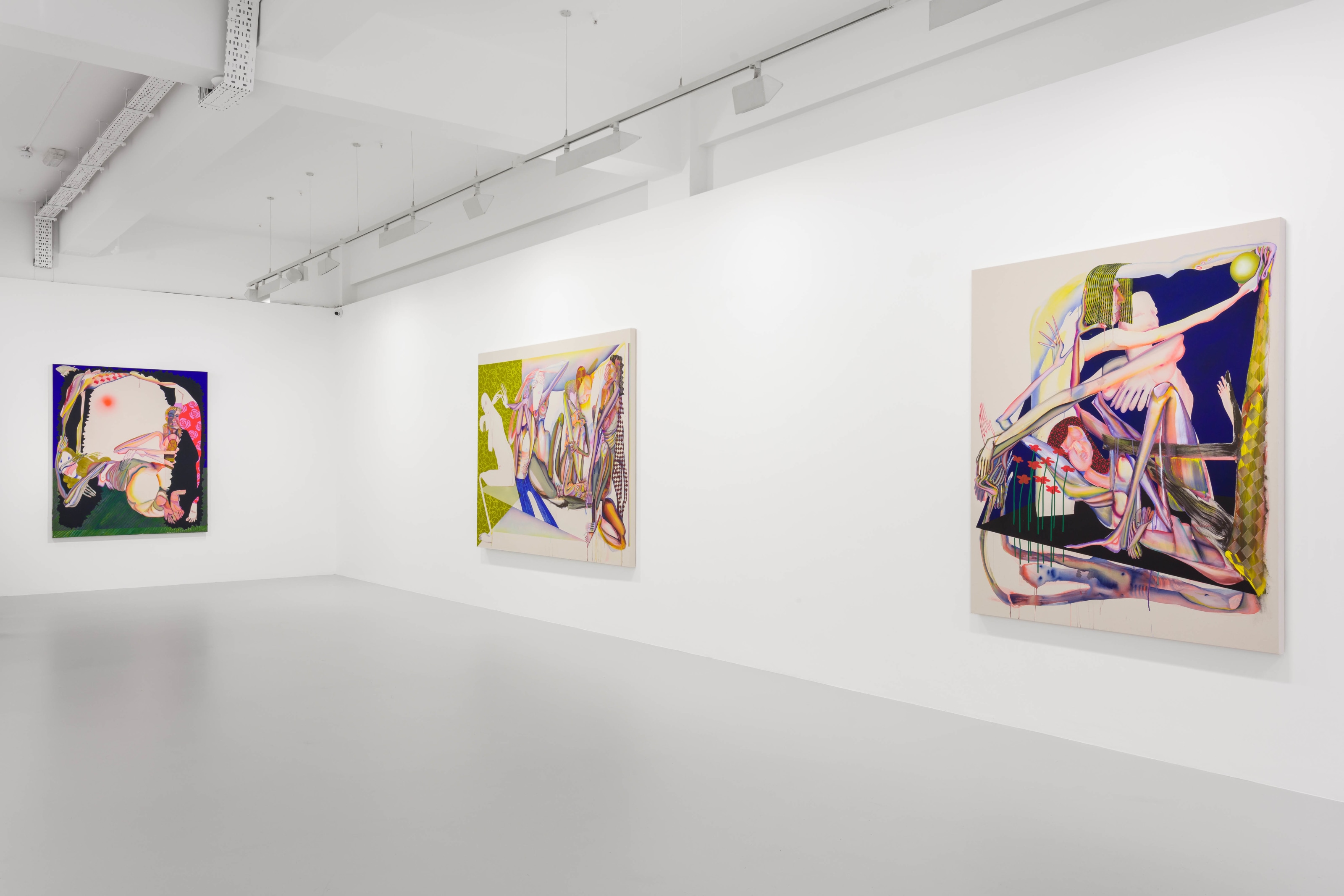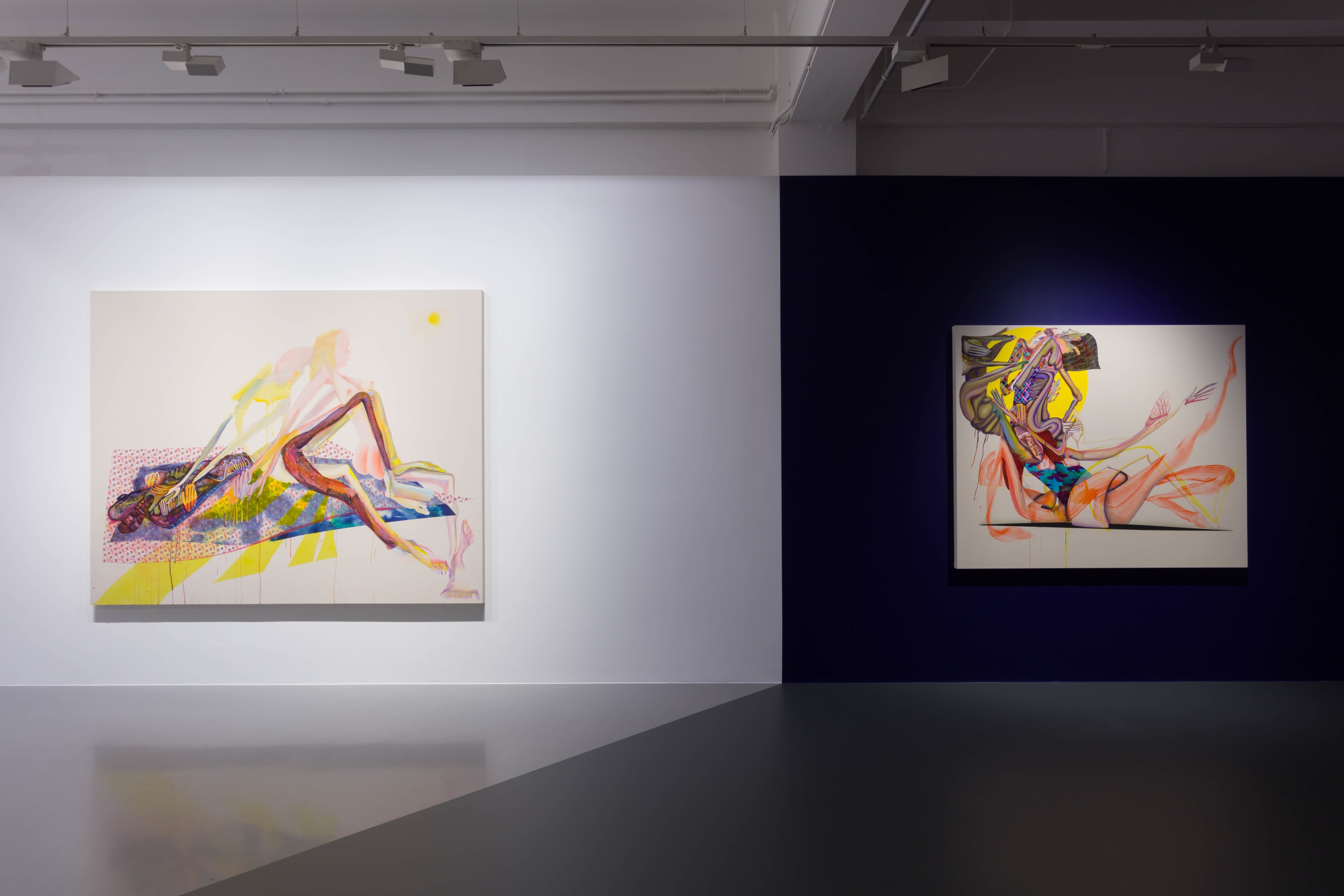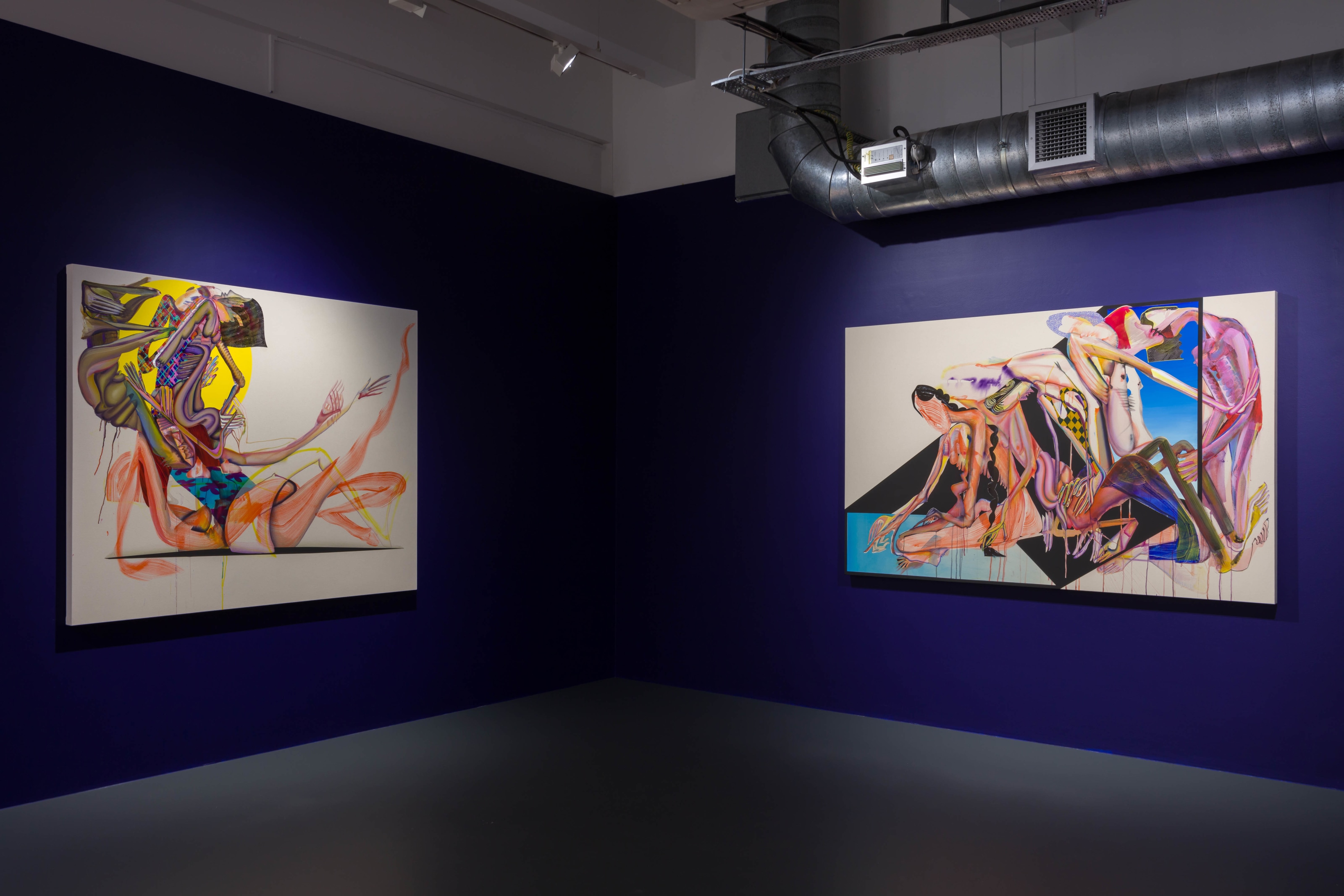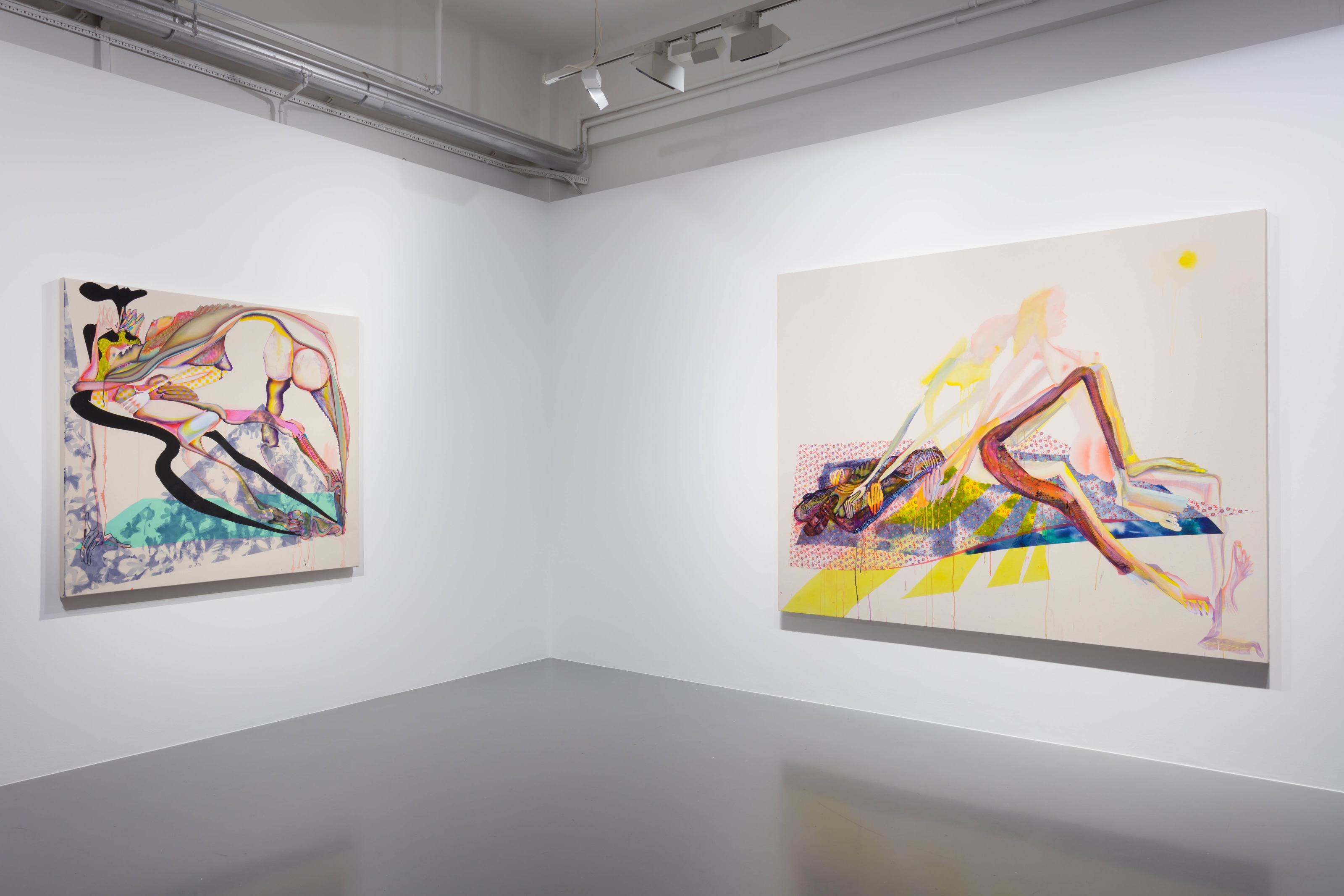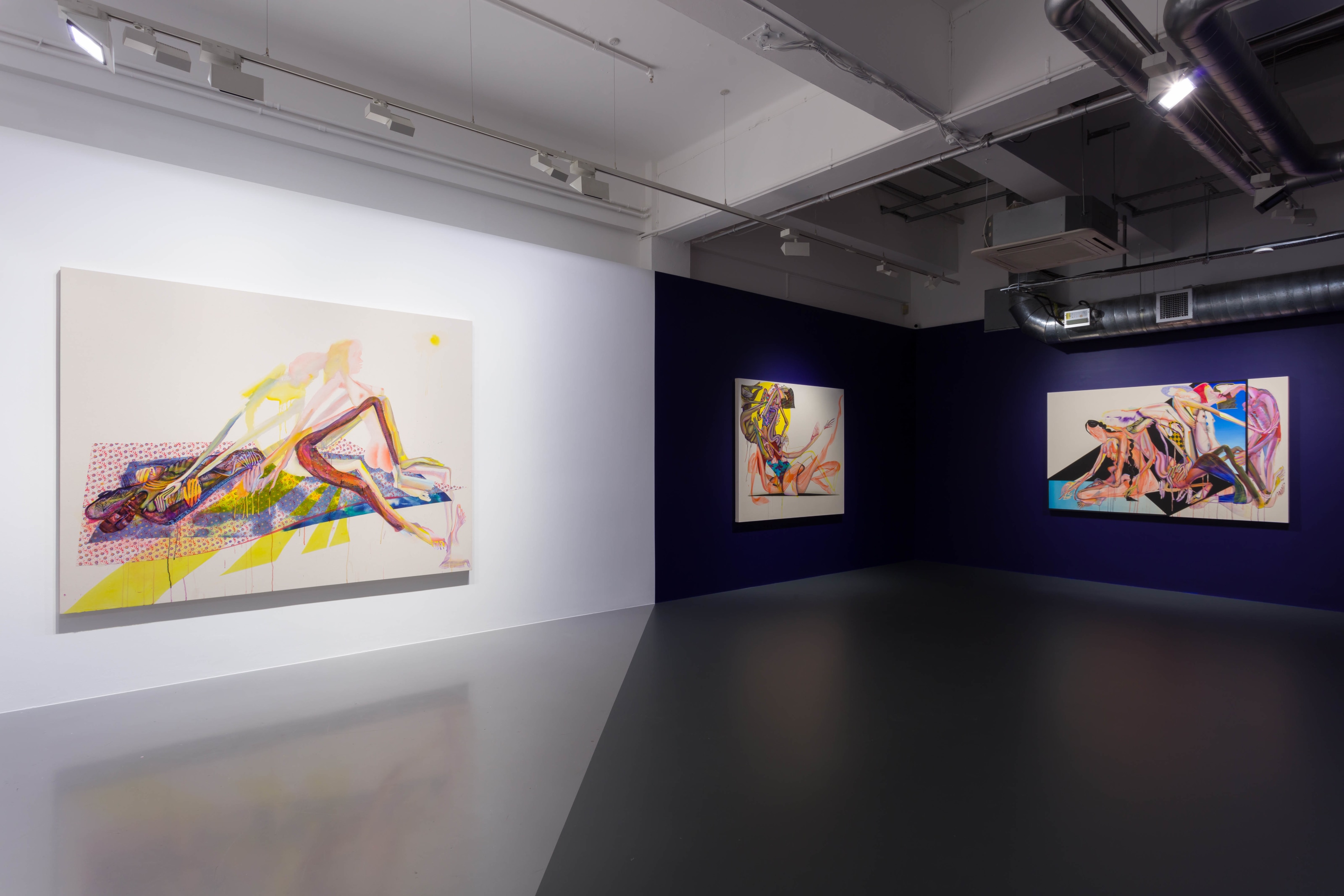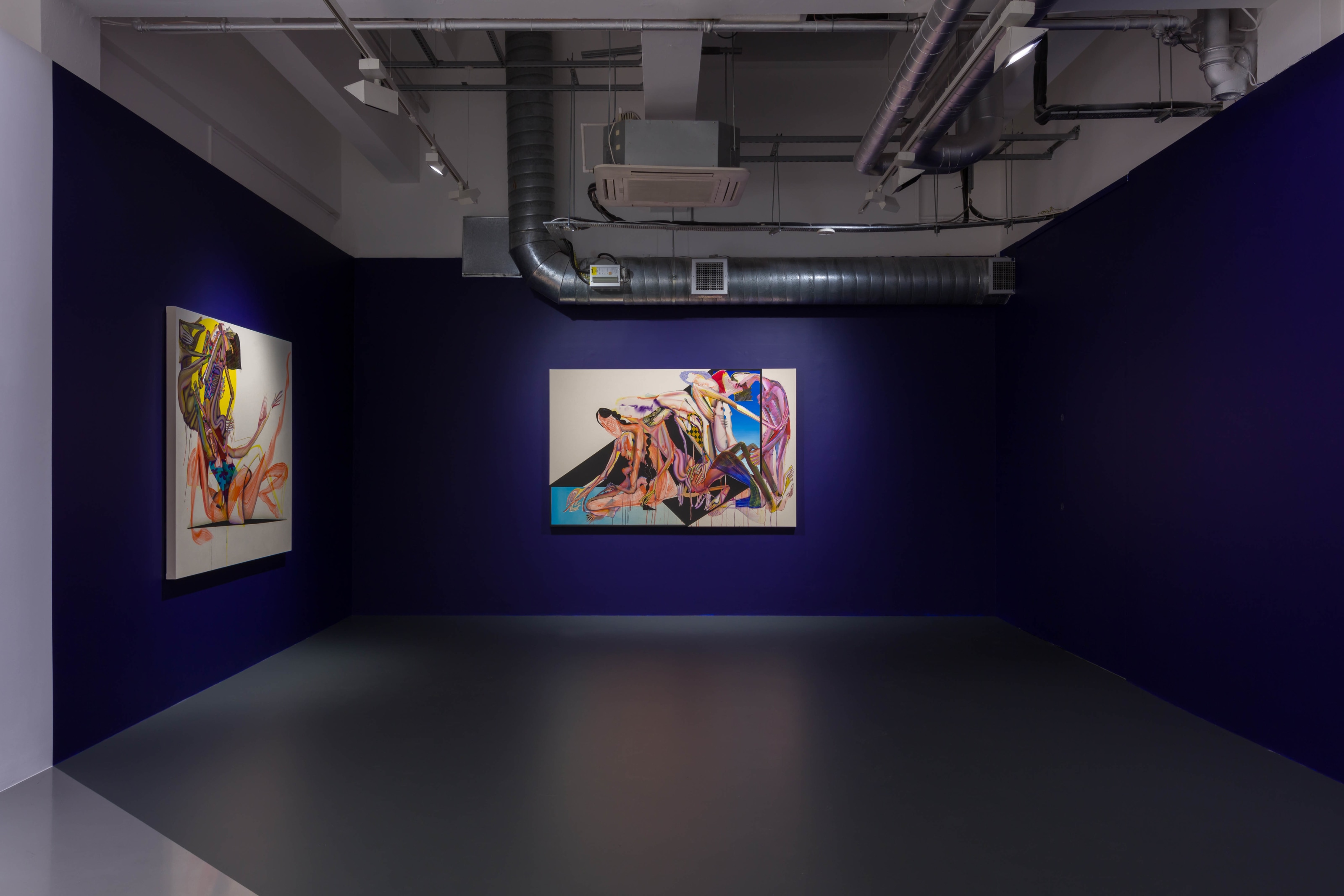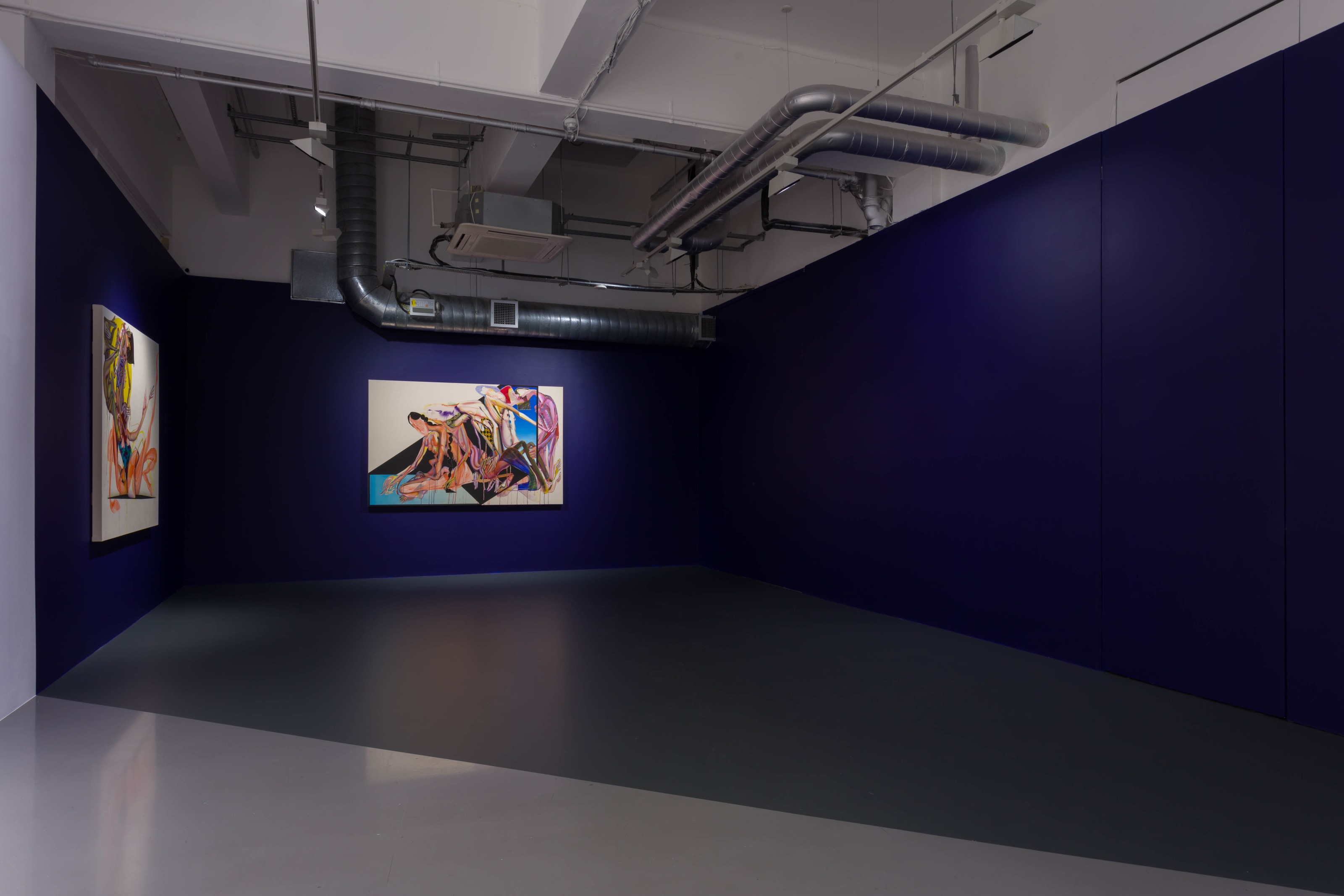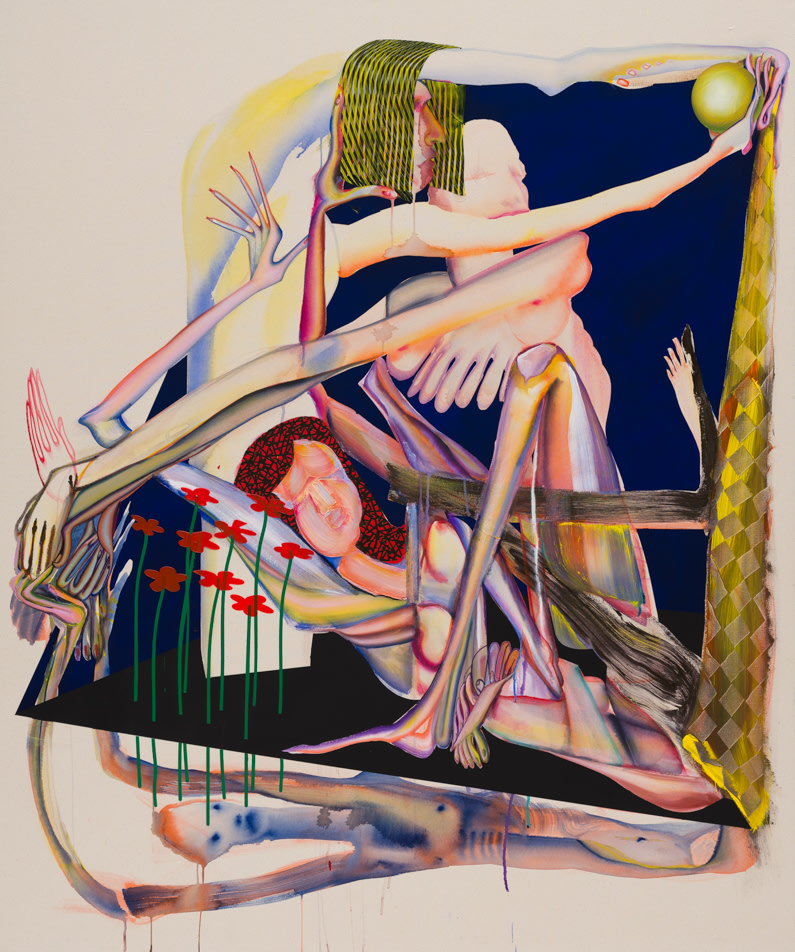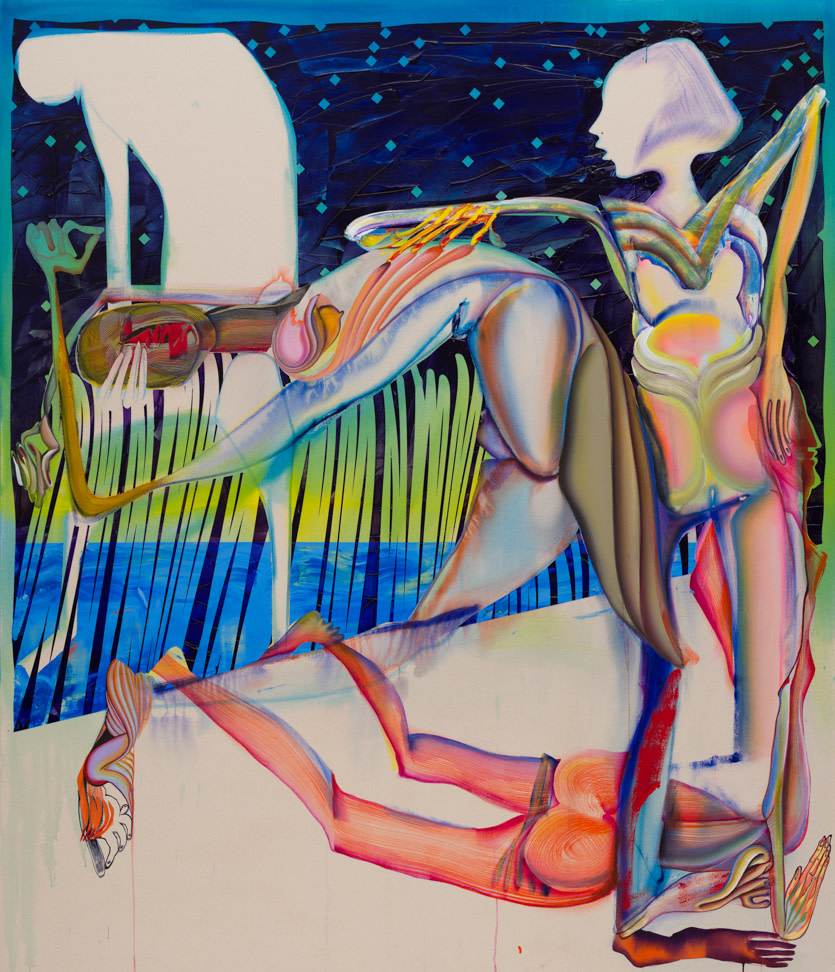
Christina Quarles
Overview
Pilar Corrias is pleased to present I Won’t Fear Tumbling or Falling/If We’ll be Joined in Another World, an exhibition of new works by Christina Quarles opening in the gallery in October 2020.
The presentation comprises nine paintings made between March and September 2020, a period during the pandemic that Quarles spent in the confines of her Altadena, California, home and studio. Facing both disconnection and disorientation as she grappled with the slow pace of her life during quarantine, Quarles observed the subtle shifts of seasons in Los Angeles, in contrast to the relentless chaos of the world, witnessed via the portal of her computer and phone. The legibility of gender and race—what it means to live in a racialized, gendered, queer body and how perceptions of us influence our interactions with others and our environments—has always been a focus of Quarles’s work. Through this exhibition, she continues to explore the complex vocabulary of the physical body and the experience of inhabiting one in the space of the world and in proximity to other bodies, particularly in the current moment, with its dizzying combination of personal immobility, the struggle for racial justice, and global agitation.
Pilar Corrias is pleased to present I Won’t Fear Tumbling or Falling/If We’ll be Joined in Another World, an exhibition of new works by Christina Quarles opening in the gallery in October 2020.
The presentation comprises nine paintings made between March and September 2020, a period during the pandemic that Quarles spent in the confines of her Altadena, California, home and studio. Facing both disconnection and disorientation as she grappled with the slow pace of her life during quarantine, Quarles observed the subtle shifts of seasons in Los Angeles, in contrast to the relentless chaos of the world, witnessed via the portal of her computer and phone. The legibility of gender and race—what it means to live in a racialized, gendered, queer body and how perceptions of us influence our interactions with others and our environments—has always been a focus of Quarles’s work. Through this exhibition, she continues to explore the complex vocabulary of the physical body and the experience of inhabiting one in the space of the world and in proximity to other bodies, particularly in the current moment, with its dizzying combination of personal immobility, the struggle for racial justice, and global agitation.
Quarles seeks out environments, planes, and patterns that can situate the figure in different ways, exploring oscillations between internal and external, nature and artifice. Entangled arms and legs and heaps of hands and feet both frame and animate the canvases; limbs grasp, gesture to, and interact with one another, connected to the same or multiple figures. People appear in motion—reaching to touch one another or themselves, bending or flattened beneath the weight of other bodies or the impression left by their own. The intimacy in these paintings is not always fixed or based on interactions with multiple people; sometimes it’s an intimacy or interaction with the self, or a memory or idea of the self.
“Intimacy, for me, is any moment we are fully embodied, any moment when we exist beyond the flattened face we present to the world and can exist in the round as whole beings—with fronts and backs and in all of our complexity and contradiction,” she says. “Intimacy is love and sex and touch, but it is also sickness and violence and death. Throughout these past six months, our fear of intimacy in these latter forms has meant sacrificing other, more pleasurable forms of intimacy. We are enduring an unbearable lack of physical intimacy in order to protect ourselves from an intimacy we physically could not bear. And, as a result, we have found ourselves in an extended flattened state, one of disembodiment and disorientation. Without these punctuations of intimacy, we have begun to lose our frame of reference, leaving us with a strange relationship to time and the world around us.”
The new works still feature the dynamic patterns, some rendered digitally with vinyl stencils and others with combs raked through thick paint, that punctuate her previous paintings, as well as lush swaths of spectral color, evoking both natural and artificial light—emanating gradients found most frequently when looking into the sky or gazing at a computer screen. The sometimes dreamy, more translucent moments are contrasted by dark, matte, light-absorbing patches, as seen in I’ll Take tha Nite Shift. Those aren’t the only surprises produced through compositions of color—sometimes two adjacent hues, like the fluorescent and warm pinks found in Edge of Tomorrow, collide so that the boundaries of the colors seem to mesh and blend, creating an illusion of vibration.
For the exhibition’s installation, Quarles will use the gallery’s light to evoke the experience of being in a body during this time. The immersive environment will reflect the cognitive dissonance of living through unprecedented confinement and connectivity, and the resulting sense of disembodiment, at odds with an increased awareness of our body and its vulnerability to factors beyond our control. On the main level, transparent colored glass will create a feeling of being trapped in amber; as visitors descend to the lower level, deep blue walls backgrounding the works will give the illusion of being enveloped by darkness.
Christina Quarles (b. 1985, Chicago, USA) currently lives and works in Los Angeles, CA. She received an MFA from the Yale School of Art in 2016, and holds a BA from Hampshire College. Quarles was a 2016 participant at the Skowhegan School for Painting and Sculpture. She was the inaugural recipient of the 2019 Pérez Art Museum Miami Prize and, in 2017, she received the Rema Hort Mann Foundation Emerging Artist Grant. Upcoming solo exhibitions include South London Gallery (2021); MCA Chicago (2021 ); and X Museum, Beijing (2021). Recent exhibitions include: Radical Figures, Whitechapel Gallery, London (2020); Christina Quarles, Pond Society, Shanghai (2019); In Likeness, Hepworth Wakefield (2019); Kiss My Genders, Hayward Gallery, London (2019); Paint, also known as Blood, Museum of Modern Art, Warsaw (2019); The Foundation of the Museum: MOCA’s Collection, Museum of Contemporary Art, Los Angeles (2019–20); Stonewall 50, Contemporary Arts Museum, Houston (2019); Always Brightest Before Tha Dusk, Pilar Corrias, London (2018); Christina Quarles / MATRIX 271, UC Berkeley Art Museum and Pacific Film Archive, Berkeley (2018); Made in L.A., Hammer Museum, Los Angeles (2018); Trigger: Gender as a Tool and as a Weapon, New Museum, New York (2017-18); and Fictions, The Studio Museum, New York (2017).
Pilar Corrias, London is open Monday–Friday, 10am – 6pm and Saturday, 11am – 6pm. Following government guidelines, and to ensure the safety of staff and public, Pilar Corrias limits visitor numbers to a maximum of 4 people at any one time.
For further information, please contact us at info@pilarcorrias.com.



